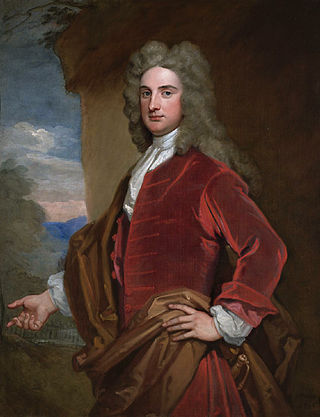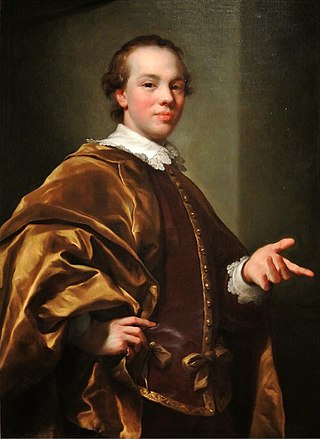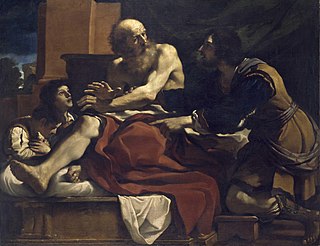
North Wembley is a district in North West London, England. It is located in the London Borough of Brent and is mostly made up of the 1930s Sudbury Court Estate. North Wembley forms the north-western part of the district of that is its namesake. The major roads in the area are East Lane, Watford Road, and Sudbury Court Drive. Most of it is part of the Wembley HA0 postcode area, but a small part in the east falls under Wembley HA9, and parts in the west fall under Harrow HA1.

Sir Thomas Phillipps, 1st Baronet, was an English antiquary and book collector who amassed the largest collection of manuscript material in the 19th century. He was an illegitimate son of a textile manufacturer and inherited a substantial estate, which he spent almost entirely on vellum manuscripts and, when out of funds, borrowed heavily to buy manuscripts, thereby putting his family deep into debt. Phillipps recorded in an early catalogue that his collection was instigated by reading various accounts of the destruction of valuable manuscripts. Such was his devotion that he acquired some 40,000 printed books and 60,000 manuscripts, arguably the largest collection a single individual has created, and coined the term "vello-maniac" to describe his obsession, which is more commonly termed bibliomania.
George Compton, 4th Earl of Northampton, PC, styled Lord Compton from 1664 to 1681, was a British peer and politician.

Sir John Rushout, 4th Baronet, of Northwick Park, Worcestershire was a British Whig politician who sat in the House of Commons for 55 years from 1713 to 1768. He was a supporter of Pulteney in opposition to Walpole, and was briefly part of an Administration. He was Father of the House from 1762.

Baron Northwick, of Northwick Park in the County of Worcester, was a title in the Peerage of Great Britain. It was created in 1797 for Sir John Rushout, 5th Baronet, for many years Member of Parliament for Evesham. He was succeeded by his son, the second Baron, who was a noted collector of art. He, in turn, was succeeded by his nephew, the third Baron, the son of George Rushout-Bowles, younger son of the first Baron. He represented Evesham and Worcestershire East in Parliament. Lord Northwick had no surviving children and the titles became extinct on his death in 1887.
Sir James Rushout, 1st Baronet, of Northwick Park, Worcestershire, was an English landowner and politician who sat in the House of Commons between 1670 and 1698.
John Rushout, 1st Baron Northwick was a British politician and Member of Parliament (MP) for Evesham.

John Rushout, 2nd Baron Northwick was an English peer, landowner and collector of art works.

John Stewart, 7th Earl of Galloway,, styled Viscount Garlies from 1747 until 1773, was a British peer who became the 7th Earl of Galloway in 1773 and served as a Member of Parliament from 1761 to 1773.
General Charles Cadogan, 2nd Baron Cadogan was an Anglo-Irish peer, soldier and Whig politician.

Isabella Brant, a portrait drawing, was executed in Antwerp around 1621, by Flemish artist and diplomat, Peter Paul Rubens (1577–1640). Brant (1591–1626) was Rubens' first wife and modelled for some of his portraits until her untimely death in 1626. The portrait is drawn in black and red chalk with white heightening on brown wash paper.

Richard Myddelton, of Chirk Castle, Denbighshire, was a Welsh landowner and politician.
Richard Myddelton, of Chirk Castle, Denbighshire, was a Welsh politician.

John Francis Moore was a sculptor who was active in late 18th century Britain. His works include two memorials in Westminster Abbey.

Anne Stewart, Countess of Galloway, was the wife of John Stewart, 7th Earl of Galloway.

Venus and Cupid is a 1510–1515 oil on canvas painting by Titian, now in the Wallace Collection in London. It is dated by the model for Venus, who also appeared in other 1510s works by the artist such as his Salome.

Anne Rushout (c.1767–1849) was an English watercolorist and diarist. Many of her works of art were botanical studies. She was also the subject of several paintings by other artists of her time.

Jacob Blessing the Sons of Joseph is an oil-on-canvas painting created ca. 1620 by the Italian Baroque artist Guercino, now in the National Gallery of Ireland. It depicts the Biblical story of Jacob blessing his grandsons Manasseh and Ephraim, with the boys' father Joseph on the right protesting that the primary right-handed blessing has been given to the second-born (Ephraim) not first-born (Manasseh) son.
Francis George Spencer, 2nd Baron Churchill,, was a British peer and diplomat from the Spencer family.

The Cockerell, later Rushout baronetcy, of Sezincote in the County of Gloucester, was created in the Baronetage of the United Kingdom on 25 September 1809 for the nabob and politician Charles Cockerell. He was Member of Parliament for Tregony, Lostwithiel, Bletchingley, Seaford and Evesham. The family seat was Sezincote House, near Moreton-in-Marsh. Gloucestershire. The house was designed by Samuel Pepys Cockerell, brother of the 1st Baronet.













